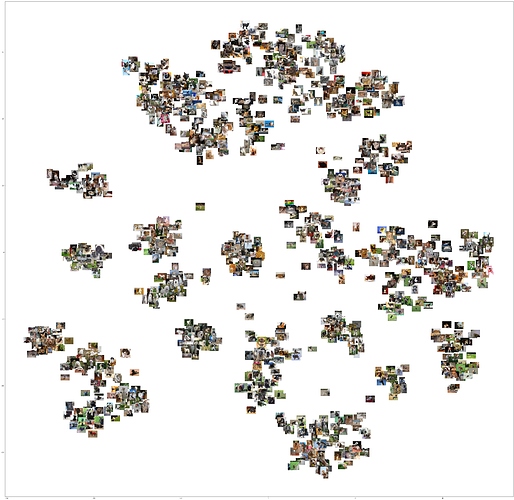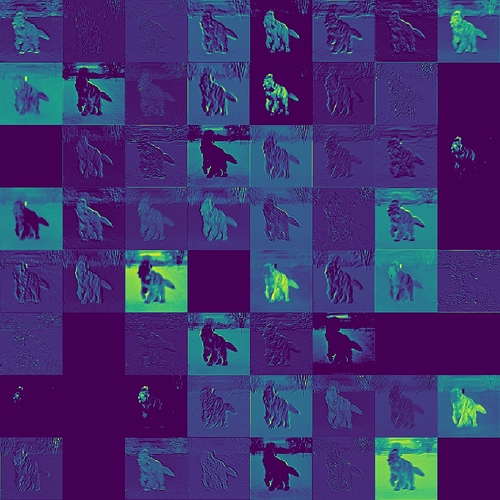KarlH
(Karl)
53
I grabbed activations from inside the model and ran them through a t-SNE to see how different dog/cat classes would cluster.
This is from the final conv block:
Also looking at how different activation layers in a conv block extract different features.
From a ReLU layer:
51 Likes

